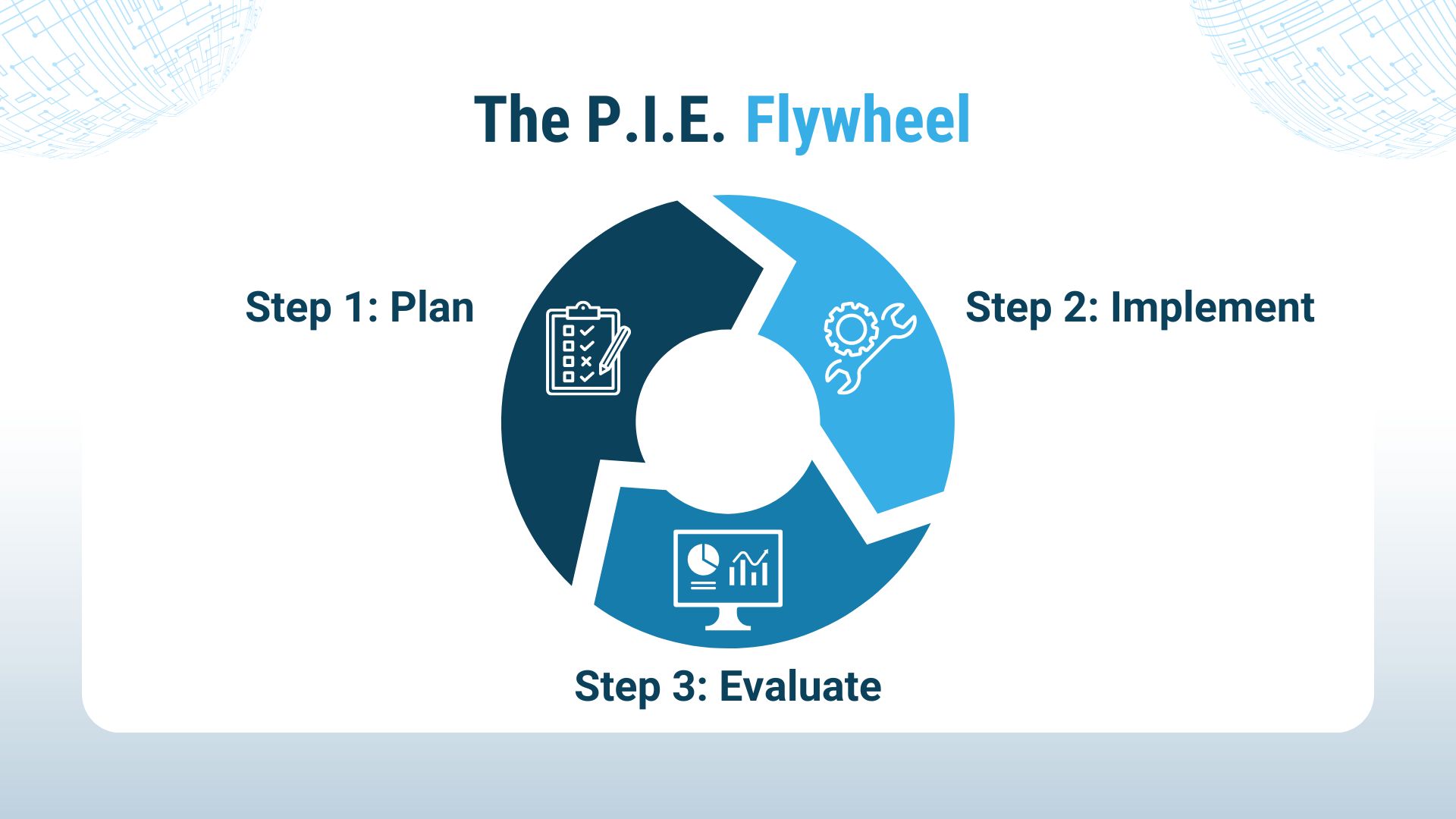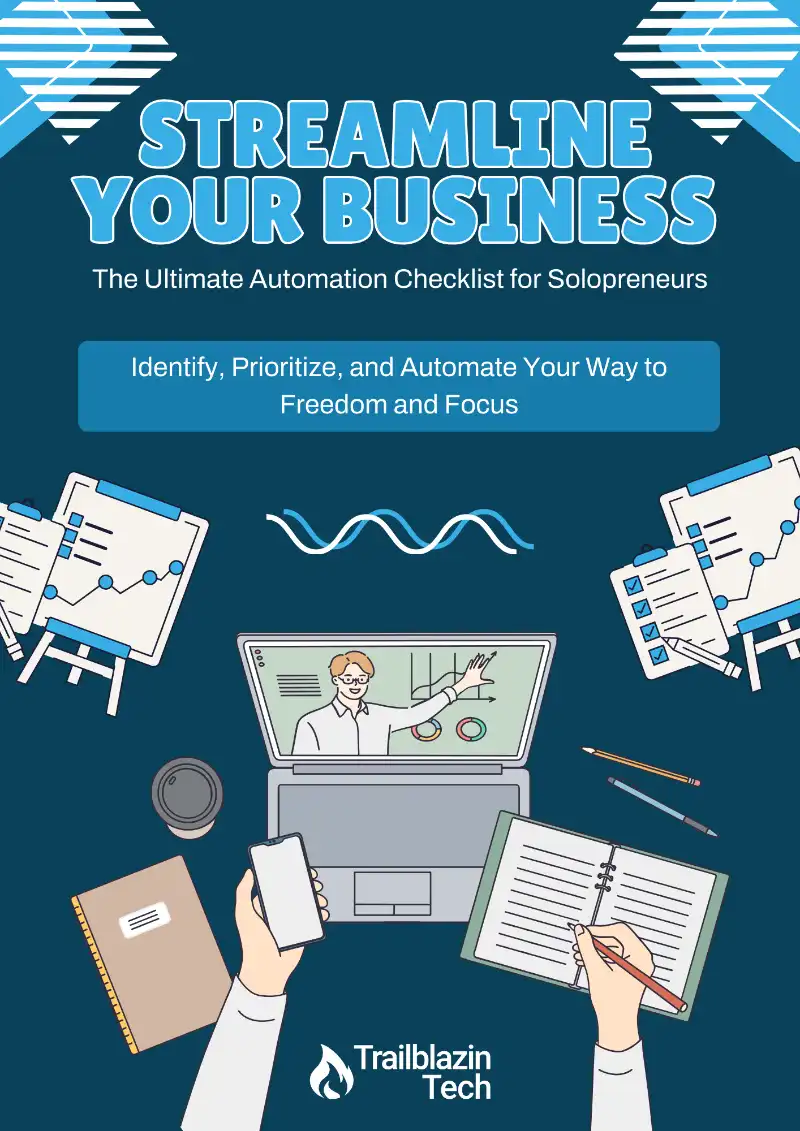Welcome back to the Automation Made Easy series! In this installment, we’re diving deeper into the essentials of automation for solopreneurs. In this lesson, we’re picking up where we left off by exploring the first stage of my P.I.E. Automation Flywheel Framework.
Recap: Where We’ve Been and Where We’re Going
In our previous lessons, we discussed:
- What is Automation? – We defined our terms and explored why automation is crucial for your business.
- P.I.E. Automation Flywheel Framework – This is the core strategy I use to build all automations, both for myself and for my clients.
Now, we’ll start dissecting the Planning phase in detail, covering the essential steps to get your automation journey started on the right foot.
The P.I.E. Automation Flywheel Framework

Before we dive into the nitty-gritty, here’s a quick refresher on the P.I.E. Automation Flywheel:
- Planning: What are we automating and how are we doing it?
- Implementation: The actual setup and execution of the automation.
- Evaluation: Regularly assessing the automation’s performance and making necessary adjustments.
This framework ensures that your automation isn’t a “set it and forget it” endeavor but a dynamic part of your business strategy that you’re continually optimizing.
Step 1: The Planning Phase
The planning phase consists of four key steps:
- Decide What to Automate: Identify tasks that are ripe for automation in your business.
- Pick Your Metrics: Determine how you will measure the success of your automation.
- Map Out the Automation: Outline the workflow and steps involved in the automation process.
- Plan the Requirements: Identify the tools you’ll need to build your automation.
Deciding What to Automate
The first thing you have to do is figure out what you want to automate. But this is also the place where your heading is probably spinning because you don’t know where to start. To kick off your automation journey, start by asking yourself these questions:
- What busy work do you hate or avoid?
- What are your repetitive tasks?
- What tasks are taking up a large portion of your time?
- What should you spend your time on?
- What shouldn’t you be spending your time on?
- Where are you procrastinating?
These questions will help you pinpoint areas in your business that are perfect for automation.
Exercise: Track Your Day
Even after asking yourself those questions, you might still be struggling to figure out what you should automate. That’s okay. One of the best ways to get a clearer picture is by figuring out what your daily activities are. Once you know what your day looks like, you’ll have an easier time answering the questions above. To do that, try this exercise:
- Pick an interval (hourly, every two hours, etc.) and set a timer.
- When the timer goes off, write down everything you worked on during that period.
- Repeat this process for an entire day, and consider doing it for several days to get a comprehensive view.
- Evaluate your notes to identify tasks that are ideal candidates for automation. Remember to refer to the above questions when evaluating your notes.
Choosing Your Metrics
Metrics are crucial for determining whether your automation is working as intended. Here are four types of metrics to consider:
- Quality: Is the automation doing what it’s supposed to do?
- Speed: How fast is the automation running, and how much time is it saving you?
- Satisfaction: How much friction has the automation removed from your daily workflow?
- Opportunity: Can you expand this automation or connect it to another?
Tip: Focus on tracking metrics that matter most to your business to guide your future decisions and optimize your automation efforts. Don’t waste your time tracking stuff that doesn’t matter.
Mapping Out Your Automation
Now that you know what you should automate and how you’re going to track its success, you can start mapping out how the automation should work. In order to make your automation a reality, there are a few essential pieces of data you need. Here’s what you need:
- The Need: What is your automation trying to accomplish?
- A Clear Beginning and End: Know what triggers the automation and what the final outcome should be.
- Individual Steps: Break down the process into clear, actionable steps.
Example: Mapping a Simple Onboarding Process
Let’s say you’re an online health & fitness coach and you want to automate your client onboarding process.
The Need: You want to save time spent manually sending emails and documents to your client, and you want to impress your client with a seamless workflow.
Here’s a simplified workflow we could put together to make that happen:

- Payment Received (Trigger)
- Send Welcome Email
- Send Contract
- Wait for Contract to be Signed
- Provide Access to Personal Training Software
- Send Next Steps Email
- Add to Weekly Emails Workflow
- Client Onboarded (End)
This simple example shows how to structure an automation from start to finish. The key is clarity and simplicity.
What’s Next?
In the next lesson, we’ll discuss choosing the right tools to implement your automation plan. We’ll take the roadmap we’ve created and match it with the tools necessary to execute it efficiently, making the entire process smooth and seamless.
Remember: Keep It Simple
When building automations, focus on simplicity. A well-planned, simple automation is far more effective than a complex one that’s hard to manage.
Stay tuned for the next lesson in the series where we’ll dive into the tools of the trade, and don’t forget to join our free community to access the worksheet that will guide you through this entire process.
Want the Slides?
Want the slides from the presentation? Click the button below to view them.
Jump Start Your Automation Journey
Find out where automation can save you time and energy with our free Automation Checklist!

